Who’s the Beatdown - Michael J. Flores
- Jeremy King

- Jan 18, 2019
- 7 min read

Jeremy’s note: Magic the Gathering has been around for over 25 years now. The game has changed quite a bit over time, but a great deal of it has remained the same. Many of the strategies for playing the game have stayed the same. Only the mechanics change, and power level of cards ebb and flow.
Today you can go to numerous websites and other players to receive help on Magic: the Gathering. But, in the early years there were not many resources. The first MTG website was called The Dojo. A lot of the strategy that players still adhere to today were formed on that sight. I spent many hours on that sight. One such article I remember reading to this day is called “Who’s the Beatdown?” by Michael J. Flores. It points out that in each match of Magic there has to be one player who plays the role of the aggressor and one who plays the role of the control, and the player’s job is to understand which role he/she is in during each match. I reference this article quite often to new players that come into Chimp’s, and I watch as the light bulb goes on in their head as it all clicks into place.
With our community continually growing I wanted to have an easy place for our new players to reference this extremely helpful article. So, with Michael J. Flores’s permission I have posted this article for you all to read. although this article references many cards that are long out of print the foundation of it is so solid that players can easily translate it to today (20 years later). I have added some card images to the article so players can reference the older cards, but the article is entirely Michael’s.
I want to thank Michael for allowing me to post this so our new players in the community have it as a learning tool, just like so many of us did back then.
If you find this article helpful please take a moment to look up the Top Level Podcast. It is made by Michael along with Pro Tour Hall of Fame member Patrick Chapin.
Who's The Beatdown?
The most common (yet subtle, yet disastrous) mistake I see in tournament Magic is the misassignment of who is the beatdown deck and who is the control deck in a similar deck vs. similar deck matchup. The player who misassigns himself is inevitably the loser.
You see, in similar deck vs. similar deck matchups, unless the decks are really symmetrical (i.e. the true Mirror match), one deck has to play the role of beatdown, and the other deck has to play the role of control. This can be a very serious dilemma, if, say, both are playing aggressive decks.
Let me give you an example: At a 1.x PTQ in Washington D. C., my teammate Al Tran was playing for a top 8 slot vs. Sligh. Al was playing Lan D. Ho's White weenie/Jank deck, normally an aggressive deck... But not vs. Sligh.
The match was split 1-1, and the third game was going to determine who made top 8.
Al's opponent went first and laid a Jackal Pup. At this point, Al had two Cursed Scrolls, two Swords to Plowshares, an Honorable Passage, and some land in hand. Al chose not to Plow the Jackal Pup, taking 2 on the first attack.
His opponent played another Pup. Al didn't Plow either, waiting on Scroll mana or a Lightning Bolt.
On his own second turn, Al played another land and a Cursed Scroll, so he only had one land up.

On his opponent's third turn, you guessed it, another Mountain came down, followed by Ball Lightning. Al was forced to Plow the Ball. He gained control over the next few turns, but ended up dying to Bolts.
What was the problem here? Al was a beatdown deck, and he wanted to deal damage to his opponent via the Jackal Pups. However, in this particular matchup, he had to play the control deck. You see, Sligh is just much faster than Jank, so Jank's way to win has to be stifling Sligh's early speed with removal, and then locking down the midgame with Cursed Scrolls. Because Sligh also has Cursed Scrolls, as well as more Bolts than Jank, the only way that Jank can win is to make sure it has a decent life total as it plays its own threat cards.
Though it ostensibly hurts the initial race to give the Sligh player four additional life from the Jackal Pups, you can see from this example that Al had to give him six more life from the Ball Lightning... And still took at least eight from the Pups before he could control them. It would have profited Al much more to Plow the Pups, Passage the Ball, and enter the midgame with twenty life as he started to threaten with his own Paladins, Priests, etc.

The same comparison can be made when two control-based decks slug it out. At the same PTQ, I was playing High Tide against what is normally a dangerous matchup for me, CounterSliver. My opponent was running the usual array of Slivers, Worship, and permission, as well as Cursed Scroll. He made the mistake of thinking he was the control deck.
After playing a turn-2 Crystalline Sliver, he followed up two turns later with Worship, so I Stoked (editor’s note: Stroke of Genius) him out. (I killed him the first game with Palinchron, and because I mostly showed him some Disrupts, Force Spikes, and card drawing, he may have thought I was more creature heavy).

It doesn't matter... He thought he was the control deck in this matchup when clearly I was the control deck. I had a comparable or greater amount of permission, but where he had Slivers, I had card drawing and deck manipulation; where he had dual lands, I had Thawing Glaciers. My Thaws were going to insure that I never missed a land drop. I had already housed a couple of his Brainstorms with Disrupt. This means that I was going to win the long game every single time.
His job, therefore, was to kill me before I killed him. The normal formula is to play some decent-sized Slivers (two power or more) attacking every turn and leaving mana open to try to counter whatever the opposing blue deck does that might be threatening (you know, a Wrath or God, an Engineered Plague, or in this case the High Tide finishing combo). First of all, he probably should have tried to threaten me more aggressively: only one Crystalline gives me a lot of turns of Thawing and card-drawing. Secondly, tapping out is the death knell: I didn't even have to waste a Turnabout on him.
In similar deck vs. similar deck matchups, there are a couple of things that you want to look at to figure out what role to play:
1. Who has more damage? Usually he has to be the beatdown deck.
2. Who has more removal? Usually he has to be the control deck.
3. Who has more permission and card drawing? Almost always he has to be the control deck.
If you are the beatdown deck, you have to kill your opponent faster than he can kill you. If you are the control deck, you have to weather the early beatdown and get into a position where you can gain card advantage.
For an example of correctly determining who is the beatdown deck and who is the control deck, look at the Sligh vs. Sligh match between Price and Pacifico at the top 8 of the 1998 U.S. Nationals. Although on the surface, the two players seem to be playing very similar decks, there are major design differences:
Dave's deck was running more Cursed Scrolls than Pacifico's, and he also had Hammer of Bogardan and Fireslinger. His only real beatdown was Jackal Pup and Ball Lightning - the rest of the deck was more control and utility oriented.
Pacifico's deck was much more damage-oriented... It was based around attacking and celerity creatures instead of dedicated removal. In addition to Jackal Pup and Ball Lightning, he had Goblin Vandal, Mogg Flunkies, Suq’Ata Lancer, and Viashino Sandstalker. Furthermore, Pacifico's deck lacked Fireslinger and Hammer of Bogardan, and ran only three Cursed Scrolls.
While Dave's deck could definitely get a quick start, in this matchup, his deck was the control deck, set up for the long game. In one duel, Dave just played land and Scrolls and did very little else. He started by removing Pacifico's creatures with blocks or Bolts, and then Scroll-locked him, gained a little card advantage, and finished the game.
Had Dave tried to race Pacifico, he might not have won. When two players are just blindly throwing their creatures into one another, the one with more damage-oriented cards is going to win the race (but I figure we expect good Sligh play from the King of Red).
Finally, think about the Suicide Black vs. Sligh matchup. These are both very fast beatdown decks. Sligh invariably wins.
Which deck has more damage? Suicide Black. It runs many high power-to-cost creatures, like Carnophage, Sarcomancy, and sometimes Flesh Reaver. Sometimes it has stuff like Hatred. It damages even itself.
Which deck has more removal? Sligh. If Suicide Black even runs Cursed Scrolls, the Sligh deck can invariably match them. Moreover, the Sligh deck has not just weenies, but Bolts.



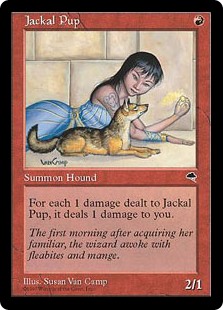

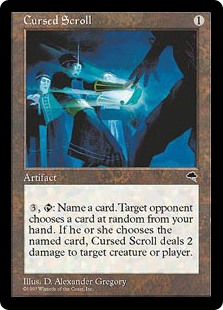

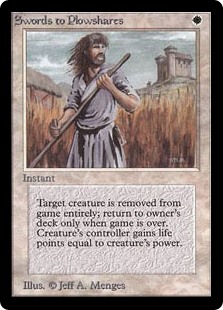

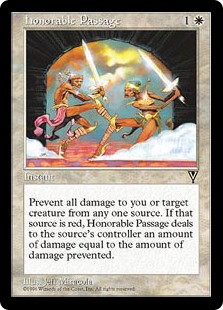



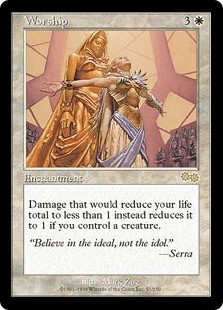

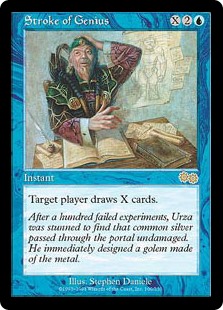

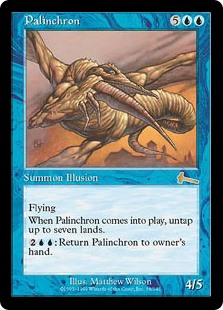

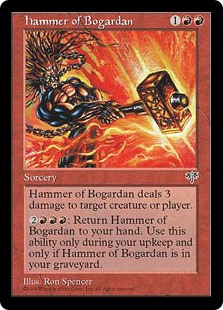

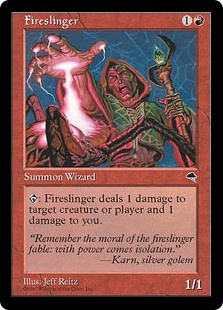



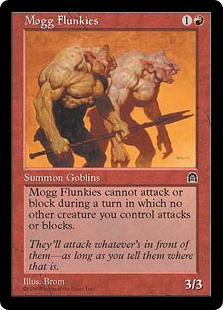







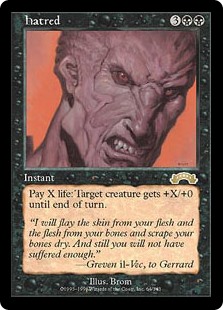



Comments